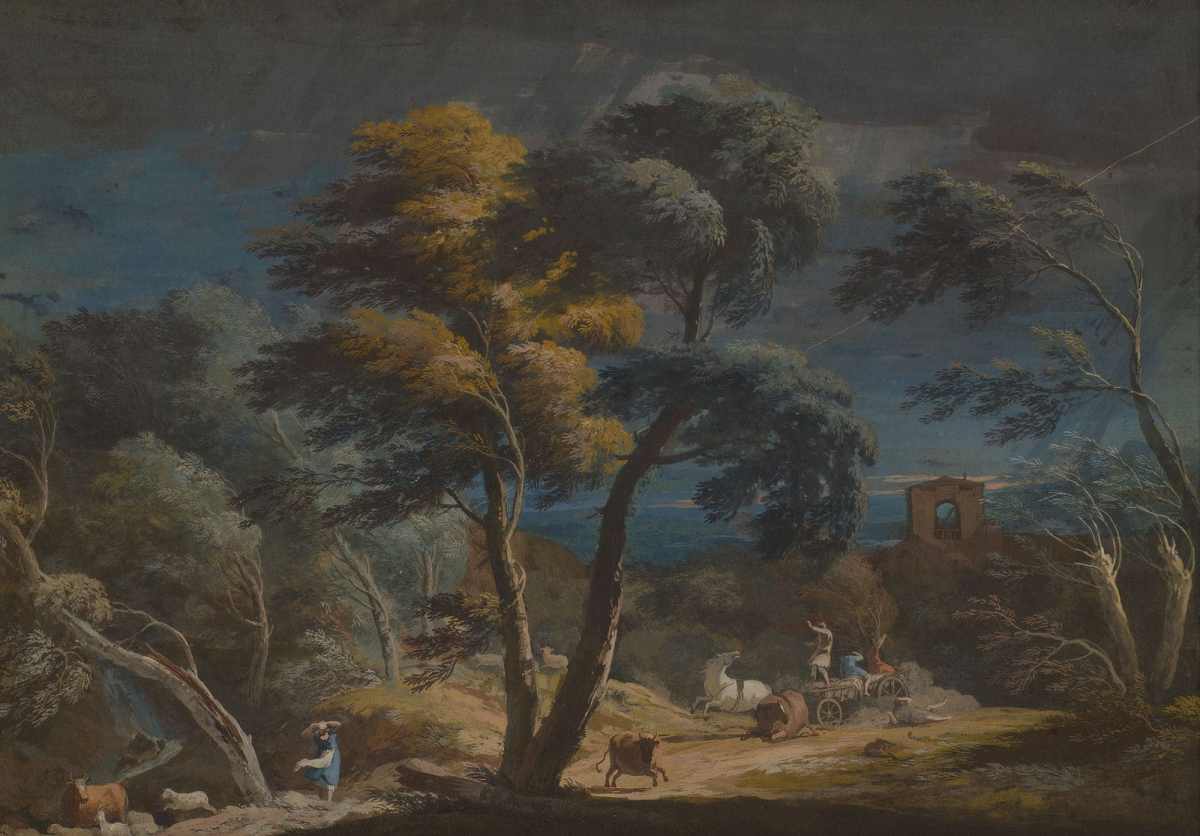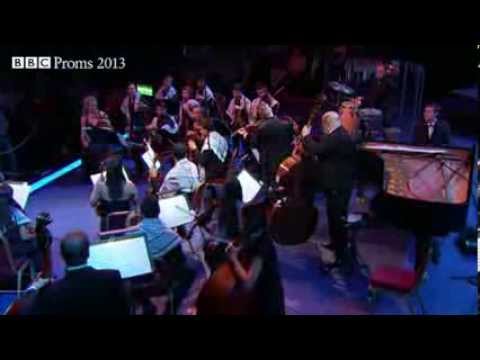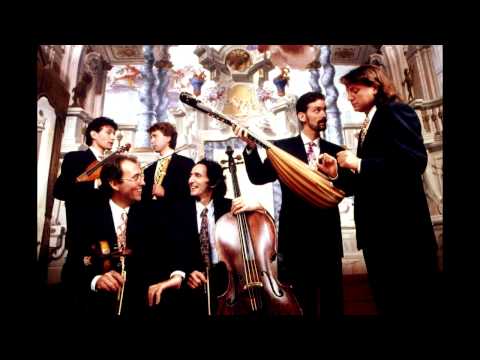Here’s a reason to hate “The Four Seasons”: I last heard “Spring”—unbidden—as I passed through east London’s Walthamstow Bus Station during a routine commute home. Realizing that piping classical music into its stations was a cost-effective means to deter young people from hanging around, Transport for London started playing Vivaldi, Mozart, and Beethoven in 2006. Since then, the practice has been widely adopted across all kinds of modern metropolitan spaces, deploying classical music as a form of social cleansing.
Transport for London wasn’t the only British organization to make use of Vivaldi’s quartet of seasonal concertos (published in 1723 and composed a few years before). If you were an unemployment or benefit claimant and phoned the helpline for the Department for Work and Pensions between 2006 and last year, you would have likely heard the same 30-second excerpt on loop as hold music. One 2019 documentary showed a caller sobbing to it. When the DWP retired the music last year, an official told The Guardian: “We had some feedback that the Vivaldi clip caused anxiety for claimants and in particular had an impact on autistic callers.” The Guardian questioned whether there had been any consideration that the psychological effects of Vivaldi’s “pastoral evocation of murmuring streams, softly caressing breezes, and flower-strewn meadows” on “stressed benefit claimants hovering on the edge of destitution in 21st-century Britain.”
In this role, Vivaldi was the literal soundtrack to post-2008 austerity; “The Four Seasons” came to represent everything debased and exclusive about classical music. One can only imagine what the composer, who worked much of his career at an all-girls’ convent-orphanage, would have made of this.
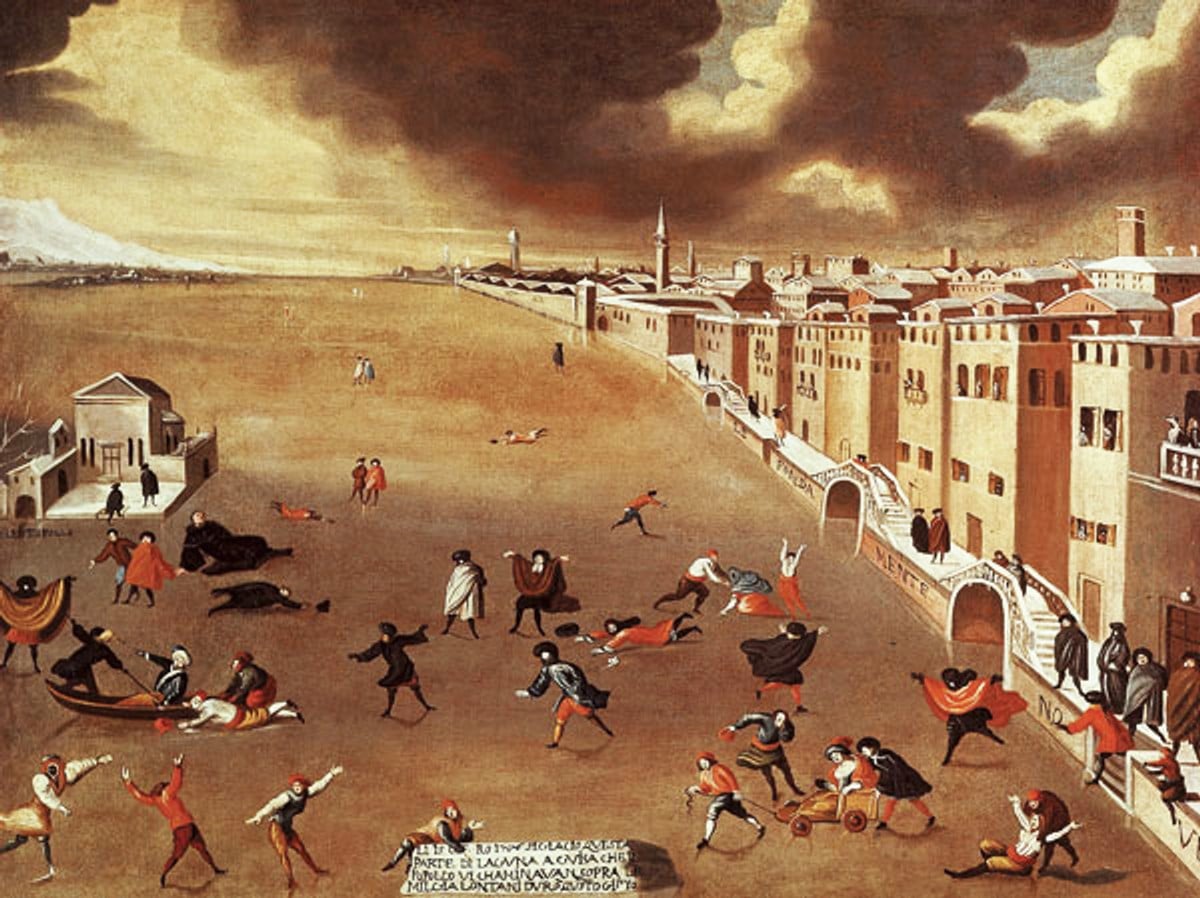
The residents of Venice’s Ospedale della Pietà were orphaned and abandoned girls, among the most vulnerable people in Venetian society and coming from its poorest quarters. Cloistered like nuns, the young girls of the Ospedale received an elite musical training along with their food and shelter. Pietà was one of the city’s four Ospedali Grandi, all of which were renowned as centers of musical excellence that attracted huge audiences from all over Europe to their concerts. Jean-Jacques Rousseau would write admiringly of performances there.
But what on the surface was a charitable and pastoral undertaking was also a lucrative commercial concern and a voyeuristic spectacle—most girls performed semi-concealed, behind grills or screens. (Anyone who thinks the all-female electric string quartet Bond is somehow cheapening Vivaldi’s music with skin-tight leather and energetic gyration might do well to remember this fact.) And it was in this climate that Vivaldi wrote four violin concerti, one representing each season of the year.
Even to our ears “there is a real modernity to it,” violinist Fenella Humphreys tells me via Zoom. “It is not just a violin part with concerto accompaniment, as would be customary at the time.” This is one of the reasons that Humphreys, a self-described “young reactionary,” shed her lingering cynicism towards the work shortly after graduating conservatory. At the time, she was asked to perform it by three separate promoters; the work helped to launch her professional career. True, the piece is a commodity for musicians and audiences alike, one whose ubiquitousness breezily undoes classical music’s highfalutin self-regard and rarefied status with each pizza, hotel chain, and Classic FM “Hall of Fame” mention. But it also has a remarkable capacity to produce innumerable new versions of itself, in kaleidoscopically diverse forms.
The latest from VAN, delivered straight to your inbox
It is music robust enough to travel; witness Astor Piazzolla’s “Four Seasons of Buenos Aires.” If Vivaldi’s Venice was a city where cultures commingle and share, so too has his work become a meeting place of place and time. At the 2013 BBC Proms, Nigel Kennedy (has any artist been so inextricable from one work?) and the Palestine Strings interspersed a fiery reading of the score with mesmerizing improvisatory sequences from Arab folk music, with solos provided by Palestinian violinist Mostafa Saad. At one point in “Autumn,” Kennedy’s teased-out syncopations melt into the falling melody from Led Zeppelin’s “Kashmir.” There are cascades of wrong notes. At one point Kennedy loses his place. It is raucous, rough, and incorrigibly fun.
Today, the work hits even more directly as one about climate and crisis. As Humphreys tells me, “We are at the weather’s mercy.” I see the work now as both a meteorological record of Vivaldi’s time and an atmospheric omen of our own, though, like Humphreys, I have not always felt this way. As a young—and not terribly good—violinist, “The Four Seasons” was a regular fixture of our string quartet repertoire at wedding receptions and Christmas parties across the east Midlands. To my 17-year-old accounting, it was certainly the best money I’d ever made—perhaps it still is. But at the time, the work only mattered to me insofar as getting paid did. Now, I see and hear more clearly its global and environmental messaging, and find myself disarmed by its musical inventiveness.
It is a bitter irony that Vivaldi lived in a city that may be destroyed by rising sea levels this century; the terrible storm that sweeps all before it in “Summer” is a harbinger of the one that will submerge La Serenissima. That storm is intimated in “Summer”’s brief slow movement, which evokes a blasted, inhospitable landscape rather than bucolic Arcady. The accompanying poem tells us of the tired shepherd robbed of sleep by distant thunder, buzzed by gnats and flies. This is a nature of exhaustion and decay. Summer is a dura staggion, a hard season, in which trees burn to a cinder. Humans and animals languish, immobilized by the baking heat. The opening section of “Summer”’s first movement has a searching, uneasy character, with oddly placed emphases—the first beat of the opening bars is silent, throwing off our usual sense of rhythmical pattern—and cavernous, drowsy pauses.
After speaking with Humphreys, I also hear the final movement of “Autumn” differently. The music imagines a fox hunt: At the outset the soloist imitates both the hunting horns that rally the men, their dogs, and their guns, but also the panic and the fear of the fox as, exhausted, it dies. This is a piece, Humphreys suggests, “about how we treat animals”, showing a creature “dying in a horrible, terrible way.” The double perspective of the soloist—both hunter and hunted—puts us in an uncomfortable, equivocating place.
“The Four Seasons” emerged in a period that saw transformations in our grasp of weather and landscape. The picturesque style that would emerge properly in the middle of the 18th Century had begun to form itself in the Venetian landscape painters of Vivaldi’s period, who played with asymmetrical compositional structures, irregularity and elements of wildness. Giorgio Vasari used pittoresco to describe painting that rejected classical rules or was non-academic, infused with an extravagance of feeling. Such paintings hover between the sublime and the beautiful, striking an uneasy balance between formal restraint and something more crudely expressive.
This is in part what made Vivaldi’s quartet of concerti, published under the title of “The Contest of Harmony and Invention,” so revolutionary in their time. Alternating sections of slow-fast-slow-fast were nothing new in the concerto grosso, a form pioneered by Arcangelo Corelli. But Vivaldi uses unusual textural contrasts and freewheeling improvisatory passages to disturb our sense of balance. We might think of the first movement of “Summer” here: In a scant minute of music we move from the songs of the turtledove and finch through the whispering zephyrs and then the explosive outburst of the bitter north wind.
Vivaldi gives music a powerful illustrative and narrative intensity. The dramatic motif of the storm, for instance, hovers over the close of the first movement, draws closer in the second, and bursts forth violently in the third. In this way it introduces a structural element in tension with the conventional symmetrical three-movement shape of the concerto (fast-slow-fast), like a dramatic painterly gesture disturbing the balanced composition of a picture.
Marco Ricci, a contemporary Venetian landscape painter, reflects Vivaldi’s aesthetic in works like “Winter Landscape” (1728-29) or “Landscape with a Storm” (1701). Here the natural world is stark and unyielding, apocalyptic—as in “Landscape with a Storm”—and bare, as in “Winter Landscape’s” frost-rimed trunks and branches. Many artists like Ricci found work painting backdrops for Venice’s opera houses. Vivaldi, an experienced theatre man, would likely have seen this artistic evolution in action.
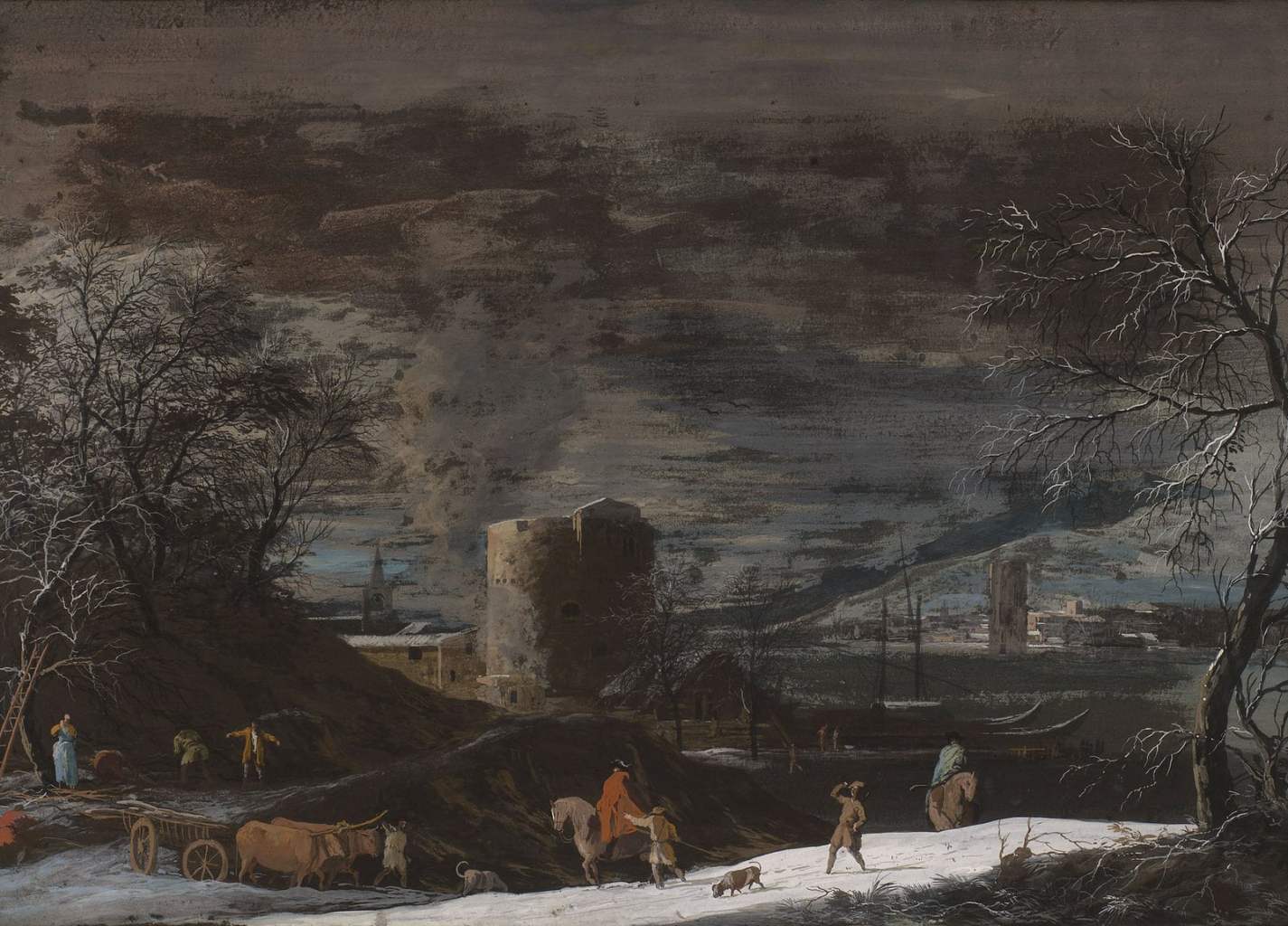
The early 18th Century also saw the beginnings of meteorology. In 1724, one year after the publication of Vivaldi’s score, Daniel Fahrenheit would propose his temperature scale. Ten years earlier, just before Vivaldi composed the work, Fahrenheit had invented the mercury thermometer. Across Europe amateur scientists began keeping systematic records of rainfall and temperature. As Jan Golinski writes in his book on 18th-century weather science, climate “was reconceived… through systematic study that attempted to normalize the weather, to reduce it to some kind of regularity.” These investigations would culminate in a more challenging realization, Golinski adds: “Climatic influences on human life showed how much it was determined by natural forces that would not submit to the powers of reason.” Vivaldi’s sudden thunderstorms, blasts of chill wind, and battered fields of corn make the same point through music.
“The Four Seasons” also came on the heels of Europe’s “Great Frost” of 1708-09. The coldest winter on record of the last 500 years led to crop failures, famine, and other calamities. The temperature dropped as low as 5 degrees Fahrenheit (-15 degrees Celsius). In Venice, parts of the lagoon froze. Gabriele Bella’s “Le lagon gelé” shows figures skittering about on the ice, about to fall or already having done so. There is the same unsettled mood of slippery panic that we find in “Winter”’s frozen paths and treacherous ice:
We tread the icy path slowly and cautiously,
for fear of tripping and falling.
Then turn abruptly, slip, crash on the ground and,
rising, hasten on across the ice lest it cracks up.
This music exerts atmospheric pressure. It’s a visceral experience of climate’s capriciousness. Wickedly lively period-instrument recordings of recent years have returned to ”The Four Seasons“ its sense of urgency and brilliance. Il Giardino Armonico’s blistering recording is less “please hold” than it is “hold on!” The unpredictability Vivaldi sees in the natural world finds its expressive counterpart in the improvisatory tradition of this music, and the strange, harsh sounds it mercurially conjures. Nature here is mysterious and threatening, red in tooth and claw. ¶
Subscribers keep VAN running!
VAN is proud to be an independent classical music magazine thanks to our subscribers. For just over 10 cents a day, you can enjoy unlimited access to over 875 articles in our archives—and get new ones delivered straight to your inbox each week.
Not ready to commit to a full year?
You can test-drive VAN for one month for the price of a coffee.

